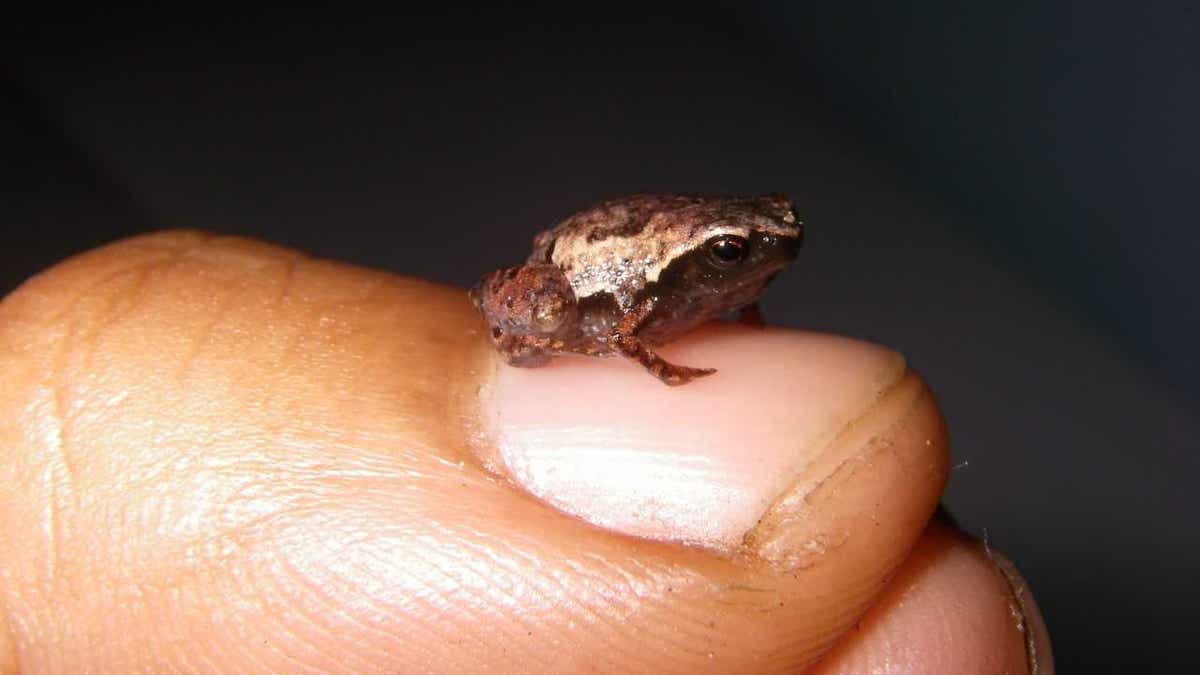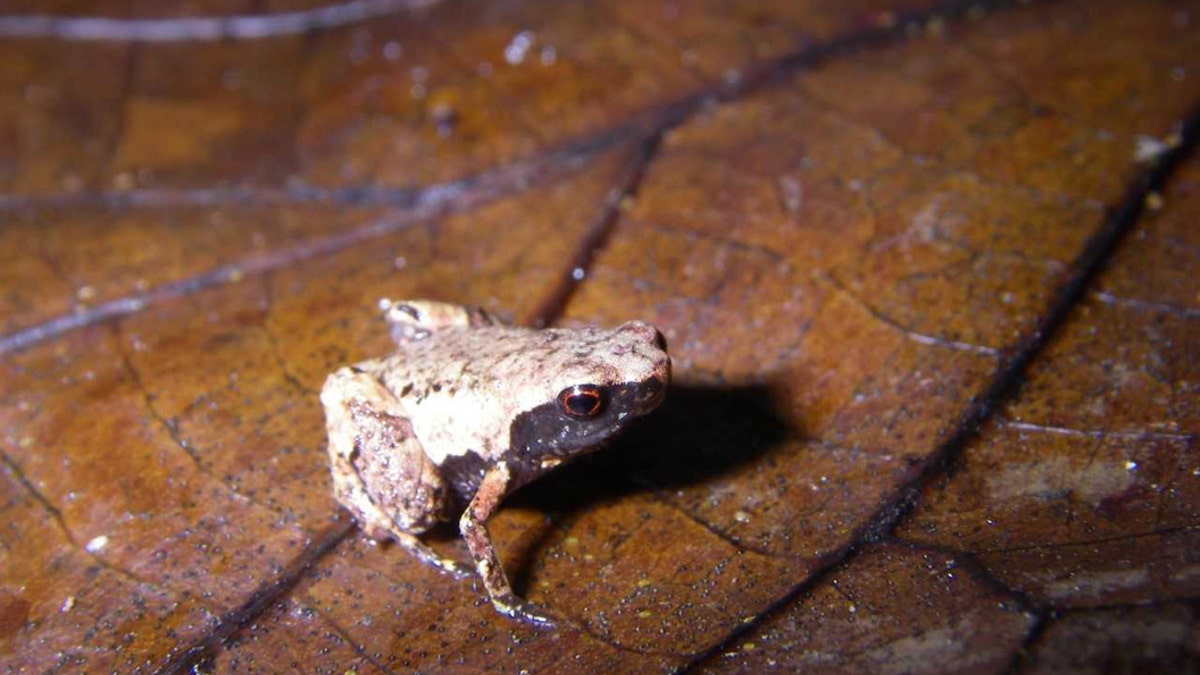
(Credit: Dr Andolalao Rakotoarison)
Five new species of frogs were recently discovered in the rain forests of Madagascar, all of them so small they could easily fit on the tip of your finger.
The frogs belong to a family called Microhylidae, which translates to “narrow–mouthed frogs”. One of the species, dubbed Mini mum, is one of the smallest frogs in existence, with adult males and females measuring 9.7 and 11.3 millimeters, respectively.
According to the study's lead author, Dr. Mark Scherz, finding new species of miniaturized frogs in their habitat is pretty easy– as long as you know where to look.
WEE ORANGE 'PUMPKIN' FROGS HAVE BONES THAT GLOW THROUGH THEIR SKIN
“In Madagascar, for example, we described 26 new species of dwarf frogs in the genus Stumpffia in 2017, all discovered within the last 20 years,” he told Fox News. “On some expeditions, especially those to previously unexplored bits of rainforest in Madagascar, there is a really good chance that you will find at least one, perhaps even more undescribed species of dwarf frogs–but being sure that what you have is new is quite a difficult thing.”
Aside from Madagascar, the frogs are found in New Guinea, and parts of South-East Asia and South America.
A new genus, Mini, was established for three of the new species. The smallest of the three, the aforementioned Mini mum, was discovered in eastern Madagascar. The next smallest is Mini scule, found in Sainte Luce and the largest of the genus is Mini ature, discovered in southeast Madagascar.
The other two species are Rhombophryne proportionalis and Anodonthyla eximia and were found in northern and eastern Madagascar, respectively. According to the study, Anodonthyla eximia – which is smaller than its sister species and secondarily terrestrial – shows that miniaturization and terrestriality could be evolutionarily linked.

(Credit: Dr Andolalao Rakotoarison)
“We have shown in our new paper that tiny frogs in Madagascar have evolved at least four times, and perhaps even more,” Scherz added. “That is incredible and suggests something interesting is going on here. Why are so many different groups getting small? Is there a survival or reproduction advantage? Are they more likely to divide into more species? Does that make individual lineages more likely to avoid extinction and diversify further? All kinds of questions open up, and we can now address them in a really nice study system.”
Scherz and his team are looking closer now at the evolution of these frogs to try to figure out what is driving and limiting changes in their ecology, as well as to piece together the evolution of their distribution over Madagascar. The researchers also plan to work with local conservation management teams to try to protect the areas of forest where the frogs live.
“Of course, protecting fragments of the forest is the first line of defense against direct human encroachment, but with a globally warming climate, it is hard to know what the future will be like for these frogs,” Scherz added. “In ages past, they might have shifted to higher elevations to maintain their temperatures, but the connectivity has now been lost, so moving to cooler areas is no longer an option.”
The research can be found in scientific journal Plos One.
